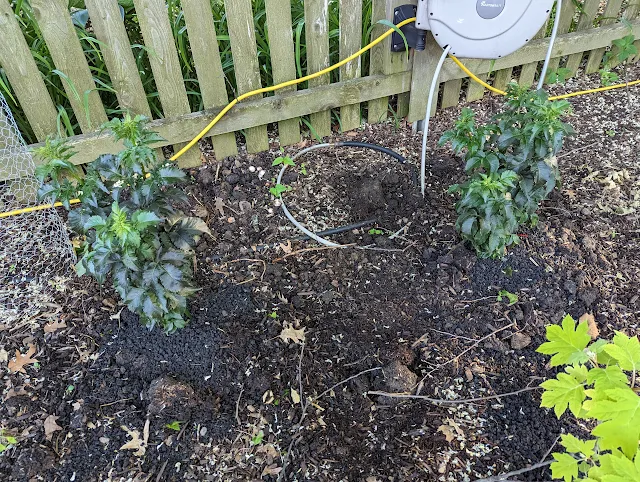Two Eiffel Tower Black Tower Elderberry - July 2023
Last Fall, I planted a Lemony Lace Elderberry that we bought at the end-of-year sale at The Growing Place basically on a whim. I've come across Elderberry shrubs before, but I didn't have them in our plan. But, a quick Google search of the Lemony Lace Elderberry had me intrigued, so I brought it home.
This Spring, the Lemony Lace Elderberry has become a star in the garden. From the purple buds that first emerged to the BRIGHT foliage in a dark spot in our garden, it has really impressed me.
So, when I came across something called a dark-foliage Elderberry that was called Eiffel Tower Black Elderberry, I was intrigued. Here's the tag for the Eiffel Tower Elderberry:
It is an upright columnar shrub with dark stems and large serrated leaves that emerge celery green and mature to burgundy to almost jet black. Its pink flowers are followed by black-purple berries that attract wildlife. It grows 6 to 8 ft. tall and 3 to 4 ft. wide.Dark foliage is something that I have been chasing for a while and I planted three of these Dark Side of the Moon Astilbes this year that I've really fallen for at the Morton sale this year.
Black Tower Elderberry forms an erect column of ornamental foliage that emerges green and ages to black. Pink and white spring blooms appear and are followed by small dark berries in the fall. Resistant to deer but attractive to butterflies and birds, Black Tower Elderberry is excellent for the back of the border and adds some textural drama to tight spaces. Plant in full coastal sun or partial shade in hot inland climates. Cutting it back hard to 1 to 2 feet in late winter allows it to send up dense new growth in spring.
Attracts butterflies and birds. Nice. Helps keep us in line with the Certified Wildlife Habitat program. Textural drama to tight spaces. And...the idea of cutting them down to 1-to-2 feet in Late Winter is something that I'll have to remember: prune them at the same time that I do the roses.






Comments
Post a Comment
Be nice to each other here.